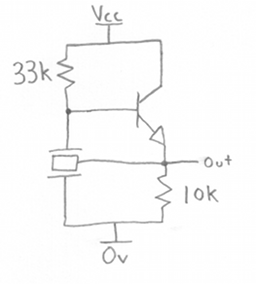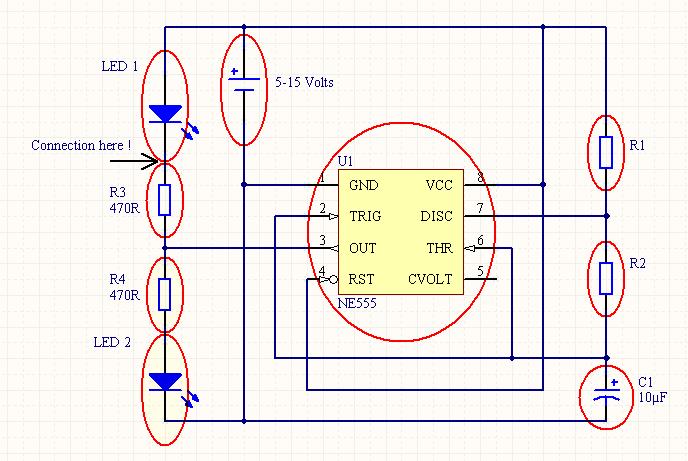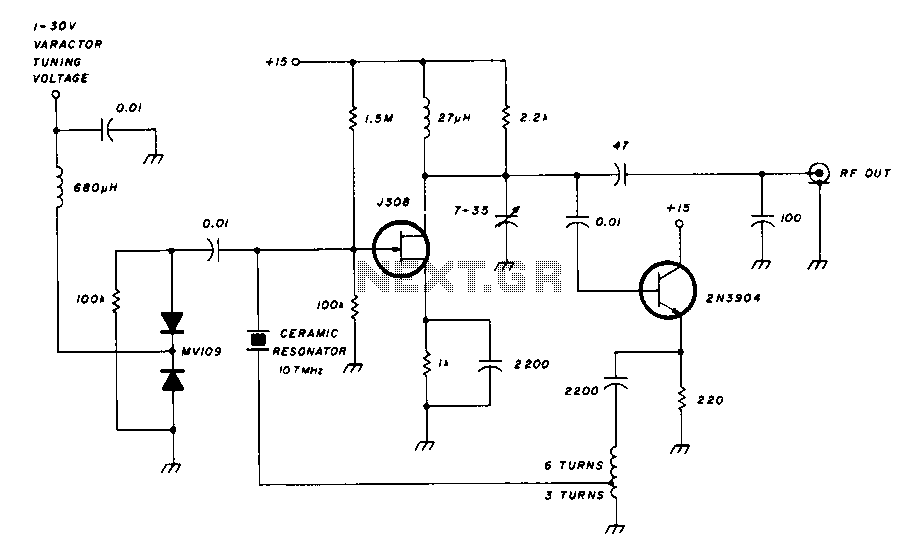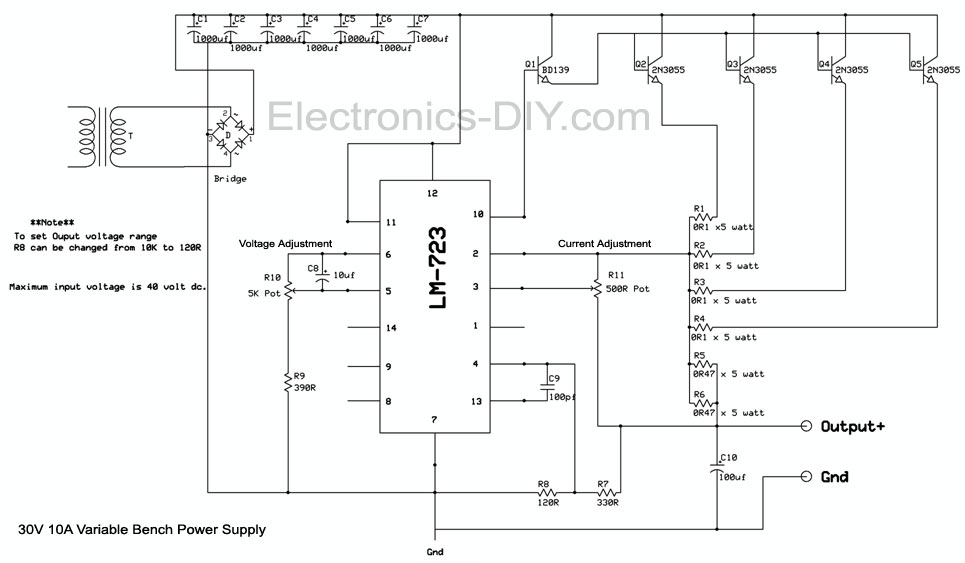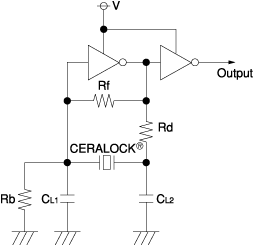
question about ceramic resonator
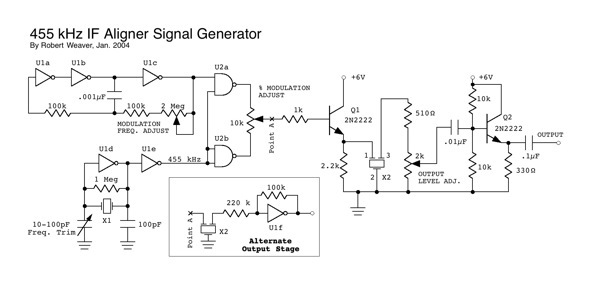
The resonator appears to be highly susceptible to harmonics. For instance, if the resonator frequency is set at 455 kHz, it also permits frequencies at 910 Hz, 1820 kHz, and 3.640 MHz, which seems to be dominant. Frequencies around 3 MHz are notably prevalent, along with their multiples. Initially, intermodulation was suspected, leading to a switch to a double balanced passive mixer and a reduction in front-end gain. It has become clear that the recurring frequencies are not due to intermodulation but rather harmonics. The inquiry arises whether it is standard practice to use a ceramic resonator as a first intermediate frequency (IF) filter. There may be superior alternatives to the inexpensive one acquired, as its performance has been unsatisfactory for a single conversion receiver design. Two resonators were utilized: one after the post-mixer amplifier and another after a single-stage amplifier. While this setup provided some improvement, harmonic responses persisted. The choice of a 455 kHz IF is contingent on the RF frequency, typically aiming for an RF to IF ratio of 5 to 7. Excessively high RF frequencies necessitate substantial RF filtering to mitigate mixer image issues, while a high IF frequency can lead to A-B (Able-Baker) spurs. Most modern receivers employ direct conversion techniques, utilizing highly precise mixers to avoid DC offsets and second-order cross-modulation, often featuring automated self-calibration within the direct conversion integrated circuit (IC). The discussion raises the question of whether these considerations pertain solely to phase-locked loop (PLL) systems. Clarification is sought regarding the output level of the voltage-controlled oscillator (VCO) or voltage-controlled oscillator (VFO). Observations indicate that re-tapping the coil can alter performance, yet it is believed that the ceramic filter is more sensitive to harmonics, potentially remedied by a crystal filter. If PLL systems are the focus, the question arises regarding solutions for low-end VFO-type receivers. There is a concern that overdriving the filter input may lead to input/output isolation issues, with a recommendation to keep levels below 0 dBm at the filter. Cascading filters can enhance selectivity, but Murata data sheets advise the inclusion of a buffer between them. The output has been buffered, yet it remains uncertain if using a ceramic filter as the sole IF filter in a single conversion setup is common practice, as it appears unreliable. Such filters are frequently observed in second IF applications, raising the question of their efficacy as the primary selectivity component in a receiver. Researching online has not yielded schematics featuring a 455 kHz ceramic resonator as the only filter. A suggestion is made to construct a standalone filter evaluation board to assess its characteristics with known input/output impedance and drive levels. Testing in isolation could provide insights into its performance within a circuit.
In radio frequency (RF) design, the use of resonators and filters is critical for achieving desired selectivity and performance in receivers. The resonator's harmonic response can significantly affect the overall performance of the system, particularly in applications involving single conversion receivers. The 455 kHz IF is commonly used due to its balance between performance and the challenges posed by higher RF frequencies.
In practice, employing a ceramic resonator as a first IF filter can be advantageous in certain applications, but it may not always yield optimal results. The sensitivity of ceramic filters to harmonics necessitates careful consideration of their placement within the signal chain. While they can be effective in second IF stages, their reliability as the sole filter in a single conversion system may be questionable.
To enhance performance, cascading filters can improve selectivity, but this approach must be implemented with care to avoid input/output isolation issues. The recommendation to buffer the output between cascaded filters is prudent, as it ensures that the characteristics of each filter stage are preserved and that signal integrity is maintained.
For further evaluation, constructing a standalone filter evaluation board can provide valuable insights into the resonator's performance under controlled conditions. By testing with known input/output impedances and drive levels, the characteristics of the ceramic resonator can be thoroughly assessed, facilitating informed decisions regarding its application in receiver design.
Ultimately, the choice of filters and resonators in RF applications should be guided by the specific requirements of the design, including considerations for frequency response, harmonic rejection, and overall system performance.It looks as if they are highly prone to harmonics meaning in this case, that if the resonator is 455KHz, it will also allow 910Hz and 1820KHz and 3. 640MHz which seems to be dominant and on up. But the frequency around 3MHz seems to be prevalent and one or two multiple of that. It first I thought I was getting intermod so I changed my mixer to a double balanced passive mixer and reduced the gain of the front end. I see now why certain frequencies reoccur. It is not intermod it is the harmonics. So my question is this. Is it common practice or taboo to use a ceramic resonator as a 1st IF filter Maybe there are better ones then the cheap one I bought but I am very dissatisfied with it`s performance since my intention was to use it in a single conversion receiver design. In fact I even used two of them. One after the post mixer amp then a single stage amplifier followed by another. It helped but I still had the same harmonic responses. The use of 455 kHz I. F. depends on the RF frequency. Usually you want RF to IF ratio of 5 to 7. Too high RF will require too much RF filtering to reduce mixer image. Too high an I. F. will be subject to A-B (Able-Baker) spurs. Most new receivers are direct conversion. The mixer is very precise to avoid D. C. offsets and 2nd order crossmodulation. There is usually a automated self calibration within the direct conversion I. C. The use of 455 kHz I. F. depends on the RF frequency. Usually you want RF to IF ratio of 5 to 7. Too high RF will require too much RF filtering to reduce mixer image. Too high an I. F. will be subject to A-B (Able-Baker) spurs. Most new receivers are direct conversion. The mixer is very precise to avoid D. C. offsets and 2nd order crossmodulation. There is usually a automated self calibration within the direct conversion I. C. edit edit* Is this with PLL systems only If I follow this correctly, you are talking about the output level of the VFO or VCO It makes sense.
I have noticed that re-tapping the coil will change the performance to a degree but I still think the ceramic filter is more sensitive to harmonics and that it could be cured through a crystal filter. So if this is PLL only, than what would be the cure in a low end VFO type receiver Maybe your over driving the filter input causing input/output isolation issues.
I would not go over 0 dBm at the filter. You can cascade the filters for better selectivity but the murata data sheets suggest that you put a buffer in between. acquiring knowledge is like doing a jig saw puzzle, many of the bits on their own dont make sense, but they are all needed to give a complete picture.
"Eric Gibbs" Maybe your over driving the filter input causing input/output isolation issues. I would not go over 0 dBm at the filter. You can cascade the filters for better selectivity but the murata data sheets suggest that you put a buffer in between. I got the output buffered. I just don`t know if it is common practice to use one of these ceramic filters for a single conversion where it is the only IF filter.
It just seems kind of unreliable. I see them all the time in 2nd IFs and it would be useful for that but the real question is using that as the whole receiver`s selectivity. You now what I`m saying Looking at the internet I have not been able to pull up any schematics where a 455KHz ceramic resonator was the only filter.
Maybe you can build a stand alone filter eval board and test it`s characteristics with known in/out impedance and drive levels. I am sure you have a sig gen you can use no By testing it in stand alone you will get an idea of how it will perform in a circuit.
When I worked in a RF lab we always 🔗 External reference
In radio frequency (RF) design, the use of resonators and filters is critical for achieving desired selectivity and performance in receivers. The resonator's harmonic response can significantly affect the overall performance of the system, particularly in applications involving single conversion receivers. The 455 kHz IF is commonly used due to its balance between performance and the challenges posed by higher RF frequencies.
In practice, employing a ceramic resonator as a first IF filter can be advantageous in certain applications, but it may not always yield optimal results. The sensitivity of ceramic filters to harmonics necessitates careful consideration of their placement within the signal chain. While they can be effective in second IF stages, their reliability as the sole filter in a single conversion system may be questionable.
To enhance performance, cascading filters can improve selectivity, but this approach must be implemented with care to avoid input/output isolation issues. The recommendation to buffer the output between cascaded filters is prudent, as it ensures that the characteristics of each filter stage are preserved and that signal integrity is maintained.
For further evaluation, constructing a standalone filter evaluation board can provide valuable insights into the resonator's performance under controlled conditions. By testing with known input/output impedances and drive levels, the characteristics of the ceramic resonator can be thoroughly assessed, facilitating informed decisions regarding its application in receiver design.
Ultimately, the choice of filters and resonators in RF applications should be guided by the specific requirements of the design, including considerations for frequency response, harmonic rejection, and overall system performance.It looks as if they are highly prone to harmonics meaning in this case, that if the resonator is 455KHz, it will also allow 910Hz and 1820KHz and 3. 640MHz which seems to be dominant and on up. But the frequency around 3MHz seems to be prevalent and one or two multiple of that. It first I thought I was getting intermod so I changed my mixer to a double balanced passive mixer and reduced the gain of the front end. I see now why certain frequencies reoccur. It is not intermod it is the harmonics. So my question is this. Is it common practice or taboo to use a ceramic resonator as a 1st IF filter Maybe there are better ones then the cheap one I bought but I am very dissatisfied with it`s performance since my intention was to use it in a single conversion receiver design. In fact I even used two of them. One after the post mixer amp then a single stage amplifier followed by another. It helped but I still had the same harmonic responses. The use of 455 kHz I. F. depends on the RF frequency. Usually you want RF to IF ratio of 5 to 7. Too high RF will require too much RF filtering to reduce mixer image. Too high an I. F. will be subject to A-B (Able-Baker) spurs. Most new receivers are direct conversion. The mixer is very precise to avoid D. C. offsets and 2nd order crossmodulation. There is usually a automated self calibration within the direct conversion I. C. The use of 455 kHz I. F. depends on the RF frequency. Usually you want RF to IF ratio of 5 to 7. Too high RF will require too much RF filtering to reduce mixer image. Too high an I. F. will be subject to A-B (Able-Baker) spurs. Most new receivers are direct conversion. The mixer is very precise to avoid D. C. offsets and 2nd order crossmodulation. There is usually a automated self calibration within the direct conversion I. C. edit edit* Is this with PLL systems only If I follow this correctly, you are talking about the output level of the VFO or VCO It makes sense.
I have noticed that re-tapping the coil will change the performance to a degree but I still think the ceramic filter is more sensitive to harmonics and that it could be cured through a crystal filter. So if this is PLL only, than what would be the cure in a low end VFO type receiver Maybe your over driving the filter input causing input/output isolation issues.
I would not go over 0 dBm at the filter. You can cascade the filters for better selectivity but the murata data sheets suggest that you put a buffer in between. acquiring knowledge is like doing a jig saw puzzle, many of the bits on their own dont make sense, but they are all needed to give a complete picture.
"Eric Gibbs" Maybe your over driving the filter input causing input/output isolation issues. I would not go over 0 dBm at the filter. You can cascade the filters for better selectivity but the murata data sheets suggest that you put a buffer in between. I got the output buffered. I just don`t know if it is common practice to use one of these ceramic filters for a single conversion where it is the only IF filter.
It just seems kind of unreliable. I see them all the time in 2nd IFs and it would be useful for that but the real question is using that as the whole receiver`s selectivity. You now what I`m saying Looking at the internet I have not been able to pull up any schematics where a 455KHz ceramic resonator was the only filter.
Maybe you can build a stand alone filter eval board and test it`s characteristics with known in/out impedance and drive levels. I am sure you have a sig gen you can use no By testing it in stand alone you will get an idea of how it will perform in a circuit.
When I worked in a RF lab we always 🔗 External reference

